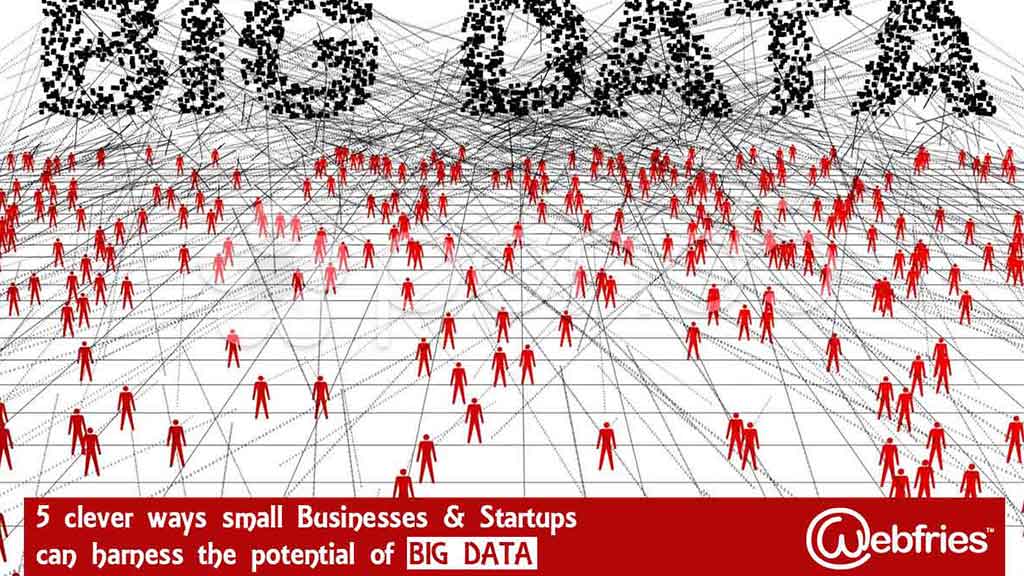Staggering Volumes of Data Rule the Roost
Studies estimate that by 2020, the world will have generated 40 trillion gigabytes of data. That is roughly equivalent to 5,200 GB for every human being on this planet. In simpler terms, we are witnessing an explosion of data like never before. This enormous volume of data is creating an ocean of opportunities for businesses of all sizes. Companies must embrace big data if they wish to survive in the cut-throat competition of today.
Big Data – Is it Really only for the Big Players in the Industry?
Data is the oil of the 21st century, and the economics of using big data is pushing small and mid-sized businesses out of the race. Hiring experts to handle big data and making use of the right database technology is expensive, making it out of reach for small businesses. The playing field now looks advantageous for multi-billion corporations that have sufficient manpower and technology to harness the power of big data.
Does that mean Small businesses and start-ups will no longer be relevant? Will they be pushed out due to a lack of analytics technologies to scale big data?
Fret not, here in this article, we give you some ingenious tools and hacks, that a small business can make use of, to harness big data and work on it to their advantage.
Big Data is for everyone, and that includes Small Businesses Too
While it’s true that small businesses have less self-generated data when compared to big fish like Facebook, Amazon, and Google, SMEs (Small to Medium Enterprises) are more suited to handle and act upon big data. The small size of these firms makes them agiler and they can take action quickly based on data-driven analysis.
Let’s take a look at a few top ways in which small businesses can utilize big data:
#1: Gain an in-depth understanding of your Clients
Thanks to big data, you can now get a clear picture of what makes your customer tick. Why they buy, how they shop, why they abandon a cart, what they’ll purchase next, which makes them refer your business to their friends, and so on.
Improving a product or service based on customer feedback is as easy as 1-2-3. You can make use of both conventional data like sales data or other new forms of data like browser logs, social media posts, text analytics, or large, public domain data (like census data).
The Emergence & Relevance of Social Media Data
Consider social media data as a mirror to your client’s mindset. If they are happy or satisfied with a particular product or service, they are likely to tweet or post about it on their social networks. It’s an easy and often cheap way to analyze customer activities and to target a niche audience. And, it’s time you start data mining on social media.
#2: Identify and Stay on Top of Trends
Until recently, analyzing and predicting upcoming trends mostly came down to gut instinct. Enter big data. It takes the guesswork out of the picture. Trending topics on Twitter and Facebook make it easy to identify what your customers want.
You can make use of services like Trend Hunter and Trendera to collate data and optimize it to suit your business. With such tools, you get access even to microscopic data like how a person moves in an online or brick-and-mortar store. The data collected can then be compared with other factors like weather, season to help you pinpoint exactly what your customers are likely to buy and when.
#3: Keep a Tab on Competition
A few decades back, you had to resort to gossip and snoop around your rival’s websites to get to know what they were offering. Some businesses used to check out their competition by posing as customers. With big data, you can get all that you need about your rivals without leaving your desk.
Google Trends can give you a detailed analysis of the popularity of a brand and social media analysis gives you an estimate of your company’s popularity among the target audience.
Remember that just as you look at your competitor, your rivals can also easily find your business. However, you can stay one step ahead by making use of big data and other latest technologies.
#4: Improve Operational Efficiency
Day-to-day operations are made efficient and faster with big data. Connect your company’s vehicles to a grid and keep a tab on their position at any time. This will help you find the flaws in the operation and eliminate them to improve productivity.
Retail companies can order stocks based on web searches and social media trends. This ensures that you don’t run out of essential stock while eliminating ordering unpopular stock.
#5: Tweak your Business Approach
Data is a vital element for the success of your business and including it in your business model is essential to improve revenues. For instance, if your company generates data about vehicles, you can then sell it to an automobile business to create a new source of income.
Some Tools to help you get the hang of Big Data:
- Google Analytics – Gives accurate information on how customers interact with your business sites like the time spent on your site, the clicks, the number of visitors who return, heat maps of your site, and much more.
- Lead Generation Tools like Radius – With these tools, you can target audiences who are likely to turn into business prospects.
- Identify what people like most on your site with the help of tools like Crazy Egg.
- Predict customer behavior accurately with the help of products like Canopy Labs.
THE TIME IS RIPE TO GET STARTED WITH BIG DATA!
You can kick start big data analytics in your start-up or small business by making use of all the data that is publicly available online. Ignoring big data can prove costly in the long run. Utilize the big data boom and find the right solution to make a huge impact on the overall functioning of your organization. Once, you figure out the right big data strategy that works for you, we are pretty sure that your business will become a force to reckon with in the dynamic, competitive global market of today.


